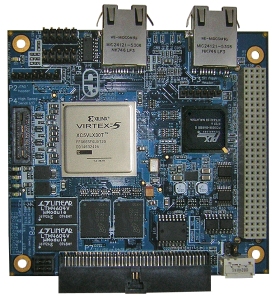When I got back from CES earlier this year I mentioned that one of my goals at the show was to share the QNX CAR vision. I saw a lot of nodding heads when I described a model where QNX and select members of its ecosystem could work together to pre-integrate our respective technologies. I saw a lot of eyes light up when I described an engagement model where automotive Tier oness and OEMs could leverage this pre-integration to get started on their designs.
On the 24th of February, QNX formally launched the QNX CAR program. If you visit the new page (www.qnxcar.com) you can get lots more information on the program, how it works and what’s available for round one. You will also see an image of a bunch of lego blocks and a slick sports car. This graphic really distills the essence of the QNX CAR program.
Historically software and silicon vendors selling into automotive have worked loosely together and have left the task of integration to the Tier one. We have all been guilty of selling a bunch of lego that can be fit together somehow but have never provided the instructions on how to build the final product. QNX CAR changes that in several ways.
By working together to pre-integrate technology into the QNX CAR environment, QNX and its ecosystem are jumpstarting our collective customers’ designs. They can now bypass the initial integration work and focus on higher level, value added development. We are finally providing the instructions on how the lego fits together.
This alone would be pretty cool but we have also been working with our partners to sort out the initial licensing. Under QNX CAR, evaluation of 3rd party technology no longer involves working with every company involved. Customers can engage directly with QNX to get their hands on all the bits and pieces involved. It’s simple, straight forward and easy.
Add to this that the program is available at no charge and that QNX silicon partners are throwing hardware into the mix. For the first time ever, developers can get started on their prototyping just by being accepted to the program. That’s it. That’s all.
All this brings me to the point I raised in the title. This is just the beginning. On March 12th the QNX CAR Foundry27 project will go live and participants will be able to access the first wave of third party technology along with QNX middleware.
You can be sure that this is only the start. We’ve been working with a longer list of partners around all sorts of technology. Check out the Foundry27 project on the 12th but come back soon. You’ll see a growing list of technologies spanning 2D/3D nav, city view, remote over the air software updates, points of interest and more. Exciting times…
Romain



 Posted by Kroy Zeviar
Posted by Kroy Zeviar 
 Intel asked me for a QNX logo to put on the outside of a car so I asked them for a picture of said car. This is a BMW with a Harman Becker infotainment system based on an Intel Atom hardware platform running QNX and our latest Aviage HMI and multimedia suite.
Intel asked me for a QNX logo to put on the outside of a car so I asked them for a picture of said car. This is a BMW with a Harman Becker infotainment system based on an Intel Atom hardware platform running QNX and our latest Aviage HMI and multimedia suite. 